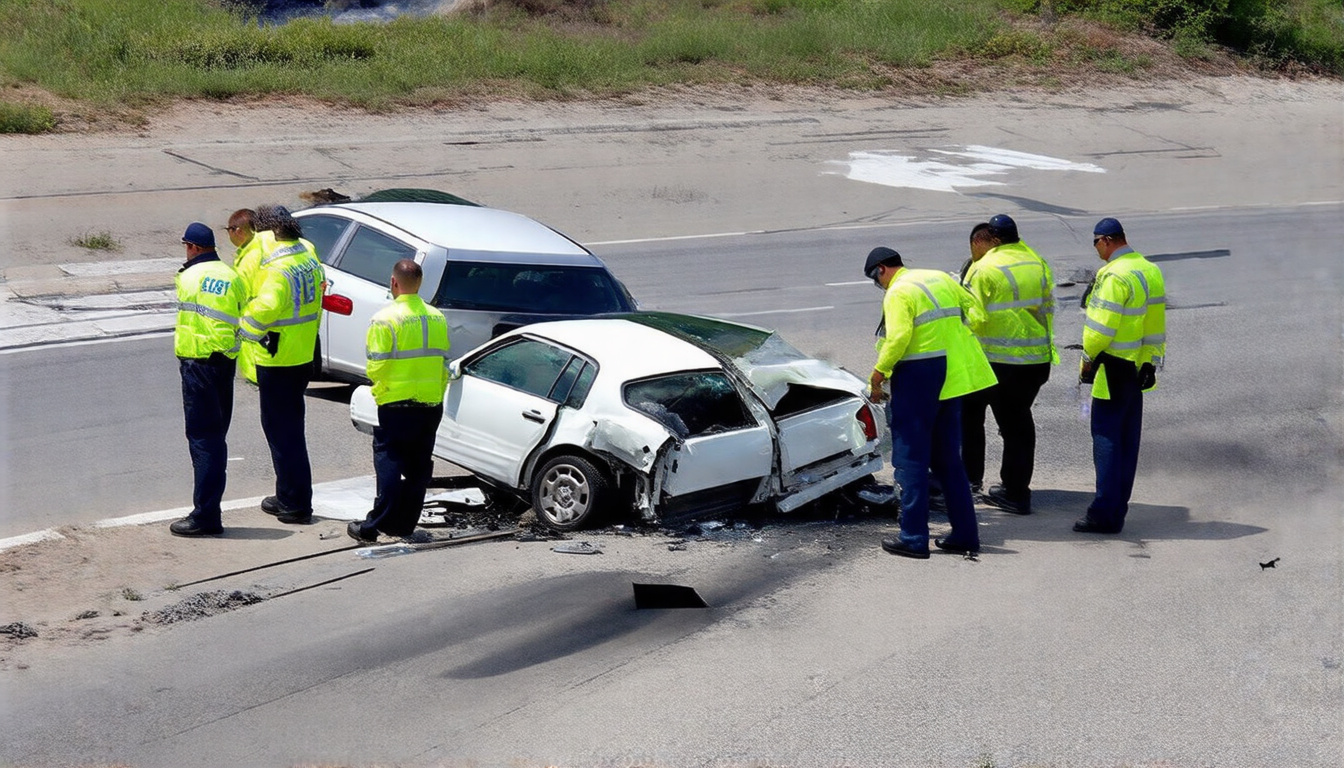Accident reconstruction stays crucial—it links vehicle collisions with their causes. Experts use science and new technology to join events that occur before, during, and after a crash. This article explains accident reconstruction methods. It shows how investigators uncover crash facts to aid legal work, boost safety, and stop future accidents.
What Is Accident Reconstruction?
Accident reconstruction examines crash evidence. Specialists check vehicle damage, scene remains, and witness words to rebuild how an accident happened. They use physics, engineering, and computer models to fix speeds, paths, impact forces, and key details. This work helps police, insurers, and courts. It clears up who is at fault, explains why a crash happened, and shows how hard the impact was. With many modern car parts and busy roads, successful reconstruction blends old methods with fresh technology.
Key Accident Reconstruction Techniques
1. Crash Scene Analysis
Investigators start with a close look at the crash scene. They record skid marks, debris spreads, car positions, road states, and weather details. They take measurements and snaps to keep vital data close for later checks.
2. Vehicle Damage Assessment
Experts inspect damage to find impact spots and force. Damage clues show collision angles, speeds, and car positions. They use models of car deformation to assess energy and force spread during impact.
3. Skid Mark and Tire Print Analysis
Skid marks and tire prints help experts guess a car’s speed and braking. They measure marks and look at tire patterns to set deceleration and find distances measured before a crash hit.
4. Event Data Recorder (EDR) Retrieval
Many cars hold an Event Data Recorder—the so-called "black box." It collects speed, accelerator moves, braking, and more before and during a crash. Using this data, experts see how the car moved right before the accident.
5. Photogrammetry and 3D Laser Scanning
Tech like photogrammetry and 3D laser scanning add clear, digital crash images. They record exact distances and angles so experts can check the scene many times by view, without returning on site.
6. Computer Simulation and Modeling
Experts build computer models to mimic the crash. They graph car motion, impact events, and occupant movement. These models test ideas, show a visual order of events, and mark injury chances.
7. Biomechanical Analysis
Biomechanics links injury marks with crash forces. Medical workers and reconstruction experts share data. This tie helps check speeds and impact strength with the injuries noted.
Five Essential Steps in an Accident Reconstruction Investigation
When experts reconstruct an accident, they follow clear steps:
- Data Collection: They gather evidence—witness words, police files, scene details, car damage, and digital records.
- Initial Assessment: They inspect the scene, note conditions, and secure evidence so it stays intact.
- Data Analysis: They check marks, damage, EDR numbers, and scene factors to work out crash dynamics.
- Simulation and Modeling: They run computer tests to rebuild the crash and try out different ideas.
- Reporting: They write clear reports, using diagrams and charts to show their findings.
Applications of Accident Reconstruction
Accident reconstruction works in different fields:
- Legal Proceedings: Courts use reconstruction to set fault and back expert views.
- Insurance Claims: Clear crash reconstructions help decide who is to blame.
- Traffic Safety Research: Learning why crashes happen sparks fixes in roads and cars.
- Law Enforcement: Reconstruction aids police in cases with risky or impaired driving.
- Vehicle Design: Car makers value crash data to build safer vehicles.
Challenges in Accident Reconstruction
Reconstruction faces real challenges:
- Evidence Degradation: Weather, busy roads, or delays may break down scene evidence.
- Human Factors: Witness words can be flawed by memory slips and bias.
- Complexity of Collisions: Multi-car or fast crashes craft damage that is hard to read.
- Technological Limitations: Not all cars have EDR, and scan gear often needs skill and cost.
Experts mix science, tech, and real-world smarts to meet these trials and reach firm conclusions.

Frequently Asked Questions (FAQs)
Q1: How is accident reconstruction different from a standard crash investigation?
A1: Accident reconstruction digs deeper. It goes beyond plain facts. It uses physics and engineering to check evidence. It rebuilds the crash with clear numbers on speed, paths, and impacts.
Q2: What technology is common today in accident reconstruction?
A2: Many experts use EDR data, 3D laser scanning, computer models, and photogrammetry. These tools keep data close and let experts show a dynamic crash story.
Q3: Can accident reconstruction determine driver fault?
A3: Reconstruction shows clear data on speeds, impact points, and driver moves. It helps set fault but must work with traffic rules and witness testimonies.
The Science that Saves Lives
Accident reconstruction is more than a study—it stands for justice, safety, and better design. It uses crash clues to point out truths and build safer futures. By joining old methods with new tools, experts can reach clear answers quickly. For more on accident reconstruction, groups like the National Highway Traffic Safety Administration offer full guides and study work.
Take Action: If you face a car crash, knowing accident reconstruction can give you power. Ask certified experts to check your case with science that ties every word and fact closely. Embrace accident reconstruction—it finds the truth and builds safer roadways for all.
Author: Doyle Weaver, Attorney at Law
Home | Estate Planning | Personal Injury | Hill Country Lawyer | Terms of Service | Privacy Policy
© 2025 Digital Law Firm, P.C.
Disclaimer: The content provided in this blog is for educational and informational purposes only. It is not intended to constitute legal advice or establish an attorney-client relationship. The information presented does not address individual circumstances and should not be relied upon as a substitute for professional legal counsel. Always consult a qualified attorney for advice regarding your specific legal situation. The author and publisher are not liable for any actions taken based on the content of this blog.

Leave a Reply